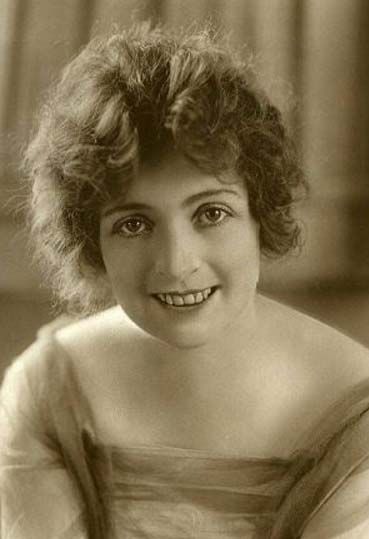Who is Myrtle Gonzalez
Myrtle Gonzalez, an exceptionally talented American actress, made pioneering contributions to the early 20th-century film industry. Born on September 24, 1891, in Los Angeles, California, to immigrant parents, she became a trailblazer in the silent film era. In a career spanning around 15 years, Gonzalez became one of the silent film’s prominent figures and the first notable Latina actress in Hollywood.
Unfortunately, her life and career were tragically cut short when she succumbed to health complications from the Spanish Flu on October 22, 1918, at the tender age of 27. Despite the brevity of her career, Gonzalez left an enduring legacy, having appeared in over 100 silent films between 1909 and 1917. She broke barriers for Hispanic women on the screen by taking on physically demanding roles in westerns and action films, showcasing her athletic prowess through performing her own stunts and engaging in fight scenes.
Early Life and Career Beginnings
Born in 1891 in Los Angeles, California, Myrtle Gonzalez was immersed in the world of performing arts from an early age. With her father involved in theater and her mother a singer, Gonzalez made her stage debut at the tender age of three, continuing to act in local productions during her childhood.
During her teenage years, director Thomas Ince discovered her, recognizing her potential as a star. The breakthrough moment for Gonzalez occurred with her first major role in the 1915 film “A War-Time Mother,” catapulting the young actress into the limelight. This marked the commencement of Gonzalez’s successful and burgeoning career in Hollywood.
Rise to Fame in Silent Films
Gonzalez’s breakthrough came with her role opposite comedian Roscoe “Fatty” Arbuckle in the 1915 short film “Fatty’s Plucky Pup.” The undeniable on-screen chemistry between them propelled Gonzalez to widespread fame, leading her to feature in numerous major motion pictures throughout the mid-1910s.
Her expressive eyes and captivating screen presence made her one of the most cherished leading ladies of the silent era. Some of her highly acclaimed films include “The Half-Breed” (1916), “The Silent Lie” (1917), and “A Bit of Kindling” (1917). As she continued to headline more movies, her popularity soared to new heights.
Groundbreaking Roles and Accolades
Gonzalez not only established herself as a genuine movie star but also consistently took on bold and progressive roles for women. Instead of being confined to traditional damsel-in-distress characters, she embraced parts that portrayed women as courageous, intelligent, and multifaceted.
Her exceptional acting skills garnered significant critical acclaim. In 1919, she received the Bronze Plaque Award from Photoplay Magazine for her outstanding performance in “The Mexican.” Additionally, publications like Motion Picture Magazine recognized her by naming her the “Most Photographed Girl in Hollywood,” further affirming her status as a talented and celebrated actress.
Impact on Representation in Hollywood
As one of the earliest successful Mexican-American actresses, Gonzalez played a pivotal role in advancing Hispanic representation in an industry predominantly dominated by white actors. Her achievements broke barriers and served as inspiration for many Latino performers who aspired to follow in her footsteps.
Gonzalez’s rapid rise to success demonstrated to Hollywood that Latinos could not only excel on-screen but could also significantly contribute to box office success and popularity. During an era characterized by heavily stereotyped roles for Hispanic actors, Gonzalez’s diverse range of characters was groundbreaking. She paved the way for future stars, influencing figures like Dolores del Río and Ramón Novarro.
Myrtle Gonzalez’s Personal Life and Relationships
In her personal life, Gonzalez experienced two high-profile marriages. Her first marriage was to silent film director Allen Holubar in 1916, but they later divorced in 1919. Subsequently, she entered into her second marriage with actor/director Allen Watt in 1917, coinciding with her retirement from acting.
Beyond her romantic life, Gonzalez forged close friendships with several fellow stars from the silent era. Notably, she had strong bonds with actresses such as Olga Printzlau and Agnes Eyre. Unfortunately, her retirement was abruptly cut short when she passed away a year later.
Premature Death and Legacy
At the pinnacle of her fame, Gonzalez’s life was tragically cut short in 1918 at the age of just 27, a victim of the Spanish Flu pandemic. Despite her very brief 5-year film career, she remarkably starred in 80 movies, leaving an enduring impact.
While many of her films may have been lost over time, Gonzalez remains an icon in both Hispanic and silent film history. She shattered boundaries, illuminating the path for other Latin actors to pursue their Hollywood dreams, and people will always remember her for that. Her pioneering legacy endures as a significant inspiration even today.
Remembering An Icon: Honors and Tributes
Gonzalez’s influence on cinema endures, even decades after her passing. In 1960, her lasting contributions were honored with a posthumous star on the Hollywood Walk of Fame, a testament to her enduring legacy. In 1998, she was featured in the Latin American Women in Film exhibit at the Autry Museum, providing additional recognition for her significant contributions to the world of cinema.
Even today, film scholars and critics view Gonzalez as a genuine trailblazer who paved the way for marginalized communities in Hollywood. Her brief yet brilliant career is eternally remembered, and her on-screen presence continues to resonate. Myrtle Gonzalez stands as a timeless icon of Hispanic representation in the world of movies.



















